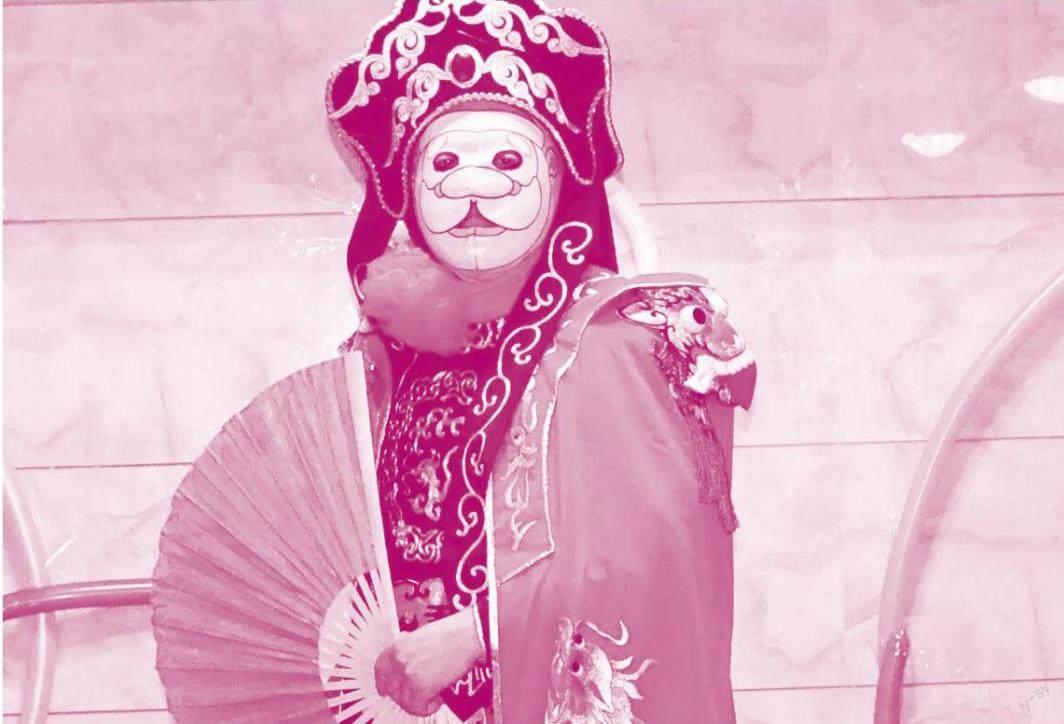Magical Face Changing 神奇的川剧变脸
2023-09-05



Face changing is a magical art. Performers wear bright costumes that include vividly colored masks and move to quick, rhythmic music. As they move, the performers faces change with lightning speed, going from one mask to the next.
The art of face changing originated in Sichuan Province where it is one of the most well-known skills of Sichuan Opera. Face changing is done during a performance for many reasons—sometimes to indicate a change of emotion of the character and sometimes to show the context of the opera.
Many observers of face changing liken it less to an operatic performance but more to magic. The speed of face changing, together with other performances, inspires awe and wonder both in opera-goers who are familiar with the cultural context and in observers who are unfamiliar with Chinese history or folklore.
Face changing is undoubtedly one of the most mysterious arts, and only the masters really know how it works. In general, there are 2 types of face changing with 3 changing methods.
變脸是一门神奇的艺术。表演者们穿着亮丽的服装,戴着色彩鲜艳的面具,随着快速而有节奏的音乐舞动。在表演者舞动的过程中,他们的脸会以闪电般的速度变化,从一张面具换到另一张面具。
变脸艺术起源于四川,是川剧表演的特技之一。在表演的过程中,变脸有很多原因——有时是为了揭示人物情绪的变化,有时是为了展现剧目的背景。
许多观众把变脸比作魔术,而非戏曲表演。无论是熟悉中国文化背景的戏曲观众,还是不熟悉中国历史或民间传说的观众,都对变脸的速度及其他表演感到惊叹和好奇。
变脸无疑是最神秘的艺术之一,只有大师才真正知道它是如何变换的。一般来讲,变脸有两种类别,三种手法。
2 types 两种类别
·Big face changing is changing the entire face and it is the most impressive form of it.
·Small face changing is the art of changing a part of the face—the beard, the eyebrows, etc.
大变脸是变整张脸,这是川剧变脸最令人印象深刻的形式。
小变脸是一种局部变脸的艺术,比如变胡子、眉毛等。
3 methods 三种手法
Plastering is the technique of spreading secret paint or make-up on the mask.
Powdering involves blowing at a hidden box of colored powder onto the face to change its color. Sometimes a tiny box is placed on the stage and the performer draws near and blows at it.
Pulling is the most difficult, complicated and impressive method. It is done by changing the actual face mask almost instantly and without the performer touching the mask itself. Pulling is impressive because the performer can switch among a huge number of masks in a short time. The performer must prepare many masks in advance, and employ quick, seemingly unrelated movements to pull the masks down.
抹脸是将特制油彩或化妆品涂抹到面具上。
吹脸是将一盒隐藏起来的彩色粉末向脸上吹,以此来改变脸的颜色。有时是在舞台上放一个小盒子,表演者会贴近盒子并对着它吹气。
扯脸是最困难、最复杂、最令人印象深刻的手法。这需要表演者在几乎不触摸面具的情况下,快速更换面具。扯脸之所以令人印象深刻,是因为表演者可以在短时间内在大量面具之间进行切换。表演者必须提前准备好许多面具,然后利用看似无关的动作迅速把面具扯下来。
Face changing is an ever-changing art, and it continues to evolve and innovate with technology. By the early 1900s, artists could switch up to 3 masks each performance. By the 1990s, artists could employ up to 4 masks, and by 2000, the number rose to 8. Nowadays, using silk masks and modern technology, artists can change 18 to 20 different masks.
变脸是一门不断变化的艺术,它会随着技术不断发展和创新。20世纪初,艺术家们每次表演至多可以切换3张面具。到20世纪90年代,艺术家们至多可以切换4张面具,而到2000年,这一数量增加到8张。如今,因为使用丝制面具和现代技术,艺术家们可以切换18到20种不同的面具。
Word Bank
complicated /'k?mpl?ke?t?d/ adj. 复杂的;难懂的
evolve /i'v?lv/ v. 逐步发展;进化
innovate /'?n?ve?t/ v. 创新;改革
